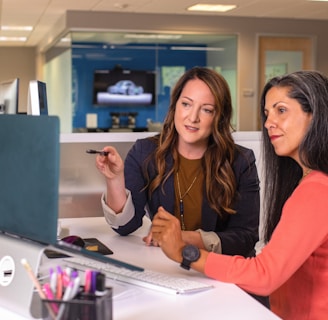Assertiveness in the workplace
Assertive techniques in the workplace
Paul Grech
6/11/20243 min read


Assertiveness in the workplace is a critical skill that allows individuals to express themselves effectively and stand up for their rights and opinions without being aggressive or passive. Here are some essential assertive skills and strategies to develop and apply in a professional setting:
Key Assertive Skills
Clear Communication
Directness: Speak clearly and directly about what you need, want, or expect.
Conciseness: Keep your messages concise to avoid misunderstandings and ensure your point is understood.
Active Listening
Pay Attention: Listen attentively to others without interrupting.
Acknowledge and Respond: Show that you understand by summarizing what the other person has said and responding thoughtfully.
Confidence
Body Language: Maintain eye contact, stand or sit up straight, and use open gestures to convey confidence.
Voice Tone: Use a firm, steady voice to project confidence without sounding aggressive.
Emotional Control
Stay Calm: Manage your emotions and remain calm, even in stressful or challenging situations.
Respond, Don’t React: Take a moment to think before responding to ensure your message is thoughtful and measured.
Empathy
Understand Others: Show empathy by considering the perspectives and feelings of others.
Balance Needs: Aim to find solutions that respect both your needs and those of others.
Boundary Setting
Know Your Limits: Be aware of your boundaries and communicate them clearly.
Say No: Learn to say no when necessary without feeling guilty or anxious.
Techniques for Assertive Communication
"I" Statements
Express Personal Feelings: Use "I" statements to express your feelings and needs without blaming others. For example, "I feel overwhelmed when I have too many projects at once."
Be Specific: Specify the behaviour or situation and its impact on you.
Assertive Body Language
Maintain Eye Contact: Show confidence and interest by maintaining appropriate eye contact.
Open Posture: Use an open and relaxed posture to appear approachable and confident.
Appropriate Gestures: Use gestures that complement your words and help convey your message.
Broken Record Technique
Repeat Your Message: Calmly and consistently repeat your message or request if it is not being acknowledged or respected. This can help reinforce your stance without becoming confrontational.
Fogging
Agree to Disagree: Accept some truth in the criticism or feedback without becoming defensive. For example, "You might be right, I do need to work on that."
Negative Assertion
Accept Mistakes: Acknowledge your mistakes or faults openly and assertively without becoming overly defensive or self-critical. For example, "You’re right, I missed that deadline. I’ll make sure it doesn’t happen again."
Request for Feedback
Seek Input: Ask for feedback to show that you value others' opinions and are open to improvement. This also encourages a two-way communication flow.
Application in Workplace Scenarios
Meetings
Speak Up: Share your ideas and opinions confidently, even if they differ from others.
Ask Questions: If you need clarification or disagree with something, ask questions respectfully to understand better and express your viewpoint.
Negotiations
State Your Case: Clearly articulate your needs and reasons during negotiations.
Seek Win-Win Solutions: Aim for solutions that satisfy both parties.
Handling Criticism
Accept Constructive Feedback: Listen to criticism without becoming defensive and use it as an opportunity for growth.
Respond Assertively: If the criticism is unjustified, respond calmly and provide your perspective.
Dealing with Conflict
Address Issues Directly: Confront issues head-on in a respectful and non-confrontational manner.
Seek Resolution: Focus on finding solutions rather than assigning blame.
Setting Boundaries
Communicate Limits: Clearly communicate your availability and workload limits to prevent burnout.
Manage Expectations: Set realistic expectations with colleagues and supervisors regarding what you can deliver and when.
Developing Assertiveness
Self-Reflection
Assess Your Current Style: Reflect on your communication style and identify areas where you tend to be passive or aggressive.
Set Goals: Set specific goals for becoming more assertive in particular situations.
Practice
Role-Playing: Practice assertive communication through role-playing scenarios with a trusted friend or colleague.
Small Steps: Start with less challenging situations and gradually take on more difficult ones as your confidence grows.
Seek Feedback
Get Input: Ask for feedback from colleagues or mentors on your assertiveness and how it is perceived.
Adjust Accordingly: Use the feedback to adjust and improve your communication approach.
Training and Development
Workshops and Courses: Attend workshops or courses on assertiveness and effective communication.
Coaching: Consider working with a coach or mentor to develop your assertiveness skills.
By mastering these assertive skills and techniques, you can improve your communication, build stronger relationships, and enhance your overall effectiveness in the workplace. At Delator Investigation Training we can provide bespoke training packages to assist your team towards mastering the skills involved with assertive communication skills.


